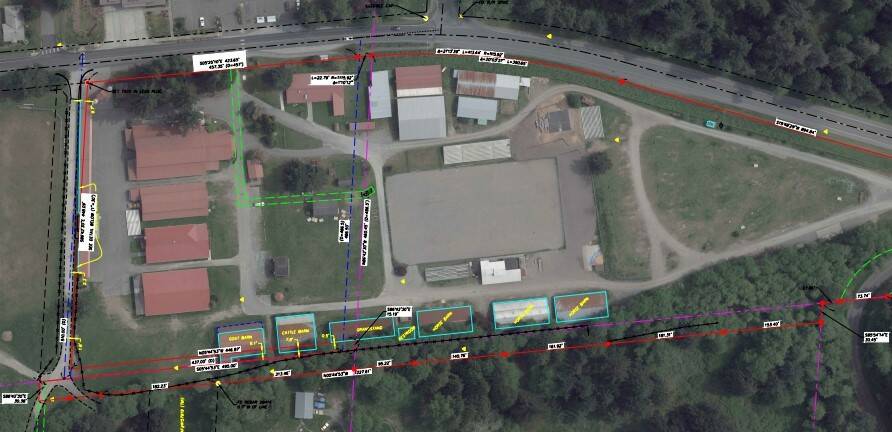South Whidbey School Board officials gave Port of South Whidbey commissioners the green light last week to proceed with a study that will assess whether housing is possible on both of the public entities’ lands.
For the past few years, the port has been pursuing workforce housing with the possibility of building it above failing concession stands on the Whidbey Island Fairgrounds, which will need to be rebuilt soon.
Earlier this year, the port decided to pause its request for a zoning change with the city of Langley that would allow housing on the fairgrounds.
The port received $150,000 in American Rescue Plan Act funds from Island County to conduct a feasibility study, part of which involved the surveying of property and the following discovery that the food booths are partially located on South Whidbey School District property.
As a result, port officials are not only seeking a boundary line adjustment but are also pondering the possibility of workforce housing on other nearby public lands belonging to the school district.
During a school board meeting Nov. 13, Port Commissioner Curt Gordon reopened the discussion, pointing to a recent letter the port sent that outlines the parameters of the feasibility study for residential housing. He highlighted the need to ask the school district’s permission to proceed.
Board Member Marnie Jackson said she was glad the port is continuing to address this issue. She wondered, however, if the study commits the school district to acting on what’s learned during the process, or if it just provides information.
Gordon confirmed there are no strings attached and said it was simply a matter of determining the feasibility of housing not only for the port but also for the nearby school district.
The board members agreed that getting more data on the topic would be useful, especially in a way that minimizes expenses.
Board Member Andrea Downs brought up the boundary line issue as something that needs to be solved first. Board Member Brooke Willeford said he recalled the two things “working in parallel” because they aren’t necessarily connected. Superintendent Jo Moccia weighed in to say that they are two separate issues.
“The port’s very clear on the district not wanting to pay anything to figure this out, but it’s a separate issue, and does not impact whether or not we do the feasibility study,” Moccia said. “Totally different piece of property, totally different issue.”
Downs said that while she didn’t have any objections to the feasibility study, she wanted to be clear that the school board is not interested in selling land.
In the end, the board advised Moccia to let the port know to continue with the feasibility study.



